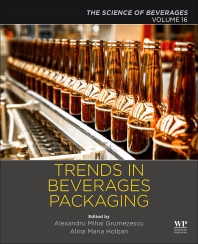If converters feel gobsmacked by the pace of change in today’s packaging world, they should get ready to shift into overdrive. In a recent study entitled “No Ordinary Disruption,” consulting firm McKinsey & Company cites five major trends that will force major changes that raise the performance bar over the next decade.
That study states that much higher levels of innovation and agility will be required to deal with the pressure and potential disruptions emanating from these trends:
- E-commerce everywhere. Intense focus on increased packaging requirements, including for new products, along with last-mile delivery innovations.
- Changing consumer preferences. Demand for much more personalization, convenience, health, and affordability, driving SKU proliferation to new heights.
- Margin compression. Further margin compression for fast-moving consumer goods (FMCG) manufacturers and retailers, with pressure passed back up the line to converters.
- Sustainability requirements. Under increasing activist scrutiny and consumer awareness, expect sustainability issues to increase at every step of the value chain.
- Digitization/Internet of Things (IoT). Converters will be forced to adopt automation advances to drive down costs and gain a competitive edge with consumers through technology integration.
The impact of each of these trends is anticipated to hit with varying strength and speed. E-commerce is expected to play the largest role, with a majority of consumers increasingly making regular use of online shopping at the expense of brick-and-mortar retailers. Meanwhile, the study authors say the second greatest impact will likely come from digitization. Initially, digital will boost cost efficiencies via automation, and then increasingly provide interactive tools to engage consumers while collecting data. The remaining three trends — changing consumer preferences, margin compression, and sustainability — are already moderate to strong in terms of their impact, and they will increase in strength.
These trends are likely to cause major disruptions within the industry. Converters cannot hope to be successful unless “they think in new ways about their focus and market approach,” the study says. Most converters need to consider an array of moves, giving attention to five priorities:
- Investing in R&D and innovation to secure a portfolio of competitive options.
- Handling SKU proliferation with more agile processes to manage shorter manufacturing runs, and faster product development and time to market.
- Reallocating resources and assets and pursuing M&A to achieve a global/local presence.
- Strengthening collaboration with FMCG manufacturers and input suppliers, including technology.
- Shifting the product mix and processes toward greater sustainability.
As the study states: If companies can capitalize on these changing consumer behaviors, technology disruptors, and sustainability trends there will be opportunities for high growth and improved profit margins in some packaging segments in the mature North American market.
John Kalkowski Editor-in-Chief
Direct Line: (248) 786-1249
Email: kalkowskij@bnpmedia.com


